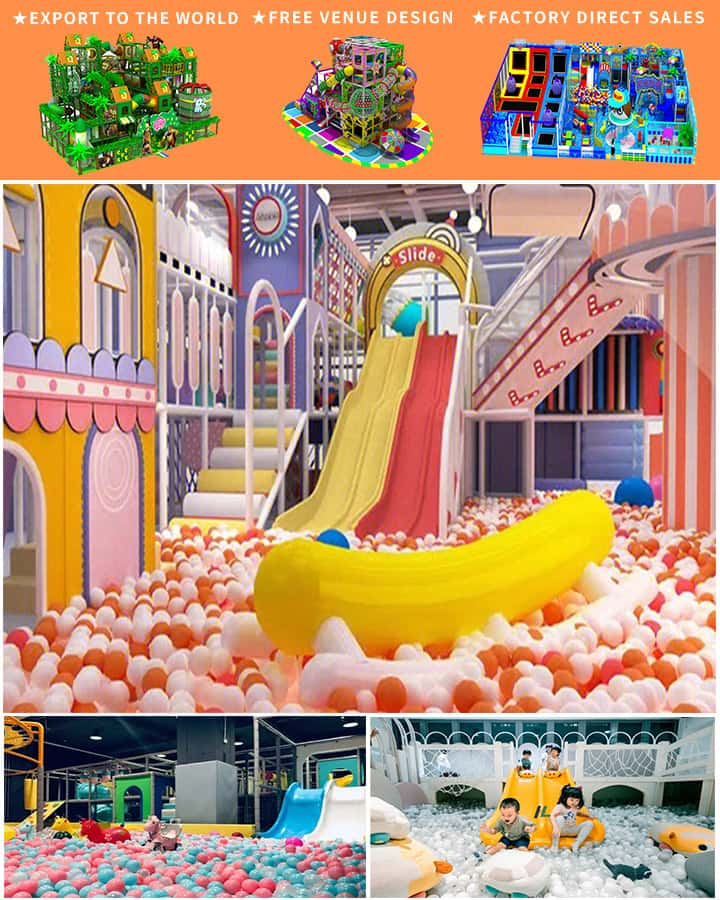Creating a fun and safe indoor playground for your kids can be a game-changer, especially when the weather is less than ideal. An indoor playground offers numerous benefits, from fostering physical development to providing a creative outlet. Let’s explore some exciting ideas and essential tips to create the perfect indoor playground for your little ones.
Benefits of an Indoor Playground
- Physical Development: Climbing structures, slides, and balancing beams enhance motor skills, strength, and coordination.
- Mental Stimulation: Interactive elements like puzzles, educational toys, and sensory activities promote cognitive growth.
- Social Skills: If designed to include multi-child play areas, it encourages teamwork, sharing, and communication among children.
- Safety: Controlled indoor environments allow for better supervision, reducing the risk of accidents compared to outdoor playgrounds.
Essential Elements for an Indoor Playground
1. Climbing Walls and Structures
- Why: Encourages physical fitness and problem-solving skills.
- Ideas: Wall-mounted climbing holds for younger kids; modular climbing systems that can be rearranged for variety.
2. Slides
- Why: Adds excitement and helps in developing balance and spatial awareness.
- Ideas: Choose compact, foldable slides that can be easily stored when not in use.

3. Trampolines or Mini Trampolines
- Why: Great for burning off energy and improving coordination.
- Ideas: Safety net trampolines are ideal for indoor use to prevent falls.
4. Balance Beams and Gymnastic Mats
- Why: Enhances coordination and flexibility.
- Ideas: Use foam balance beams and interlocking mats to create a mini gymnasium area.
5. Interactive Toys and Games
- Why: Stimulates creativity and learning.
- Ideas: Consider building blocks, interactive whiteboards, and age-appropriate puzzles.
Design Considerations
- Space Utilization: Measure your available space carefully. For smaller rooms, consider foldable or multi-purpose equipment that can be stored away when not in use.
- Safety First: Ensure all equipment is age-appropriate and meets safety standards. Use non-toxic materials and ensure there are no sharp edges or small parts that could pose choking hazards.
- Flooring: Install foam tiles or rubber mats to cushion falls and reduce noise.
- Accessibility: Arrange the playground layout so kids can move freely without obstructions. Make sure frequently used items are within easy reach.
- Aesthetic Appeal: Choose a color scheme and design that blend with your home decor to maintain a pleasant environment.
Budget-Friendly Ideas
- DIY Projects: Create your own climbing wall using plywood and rope; build DIY tunnels using cardboard tubes.
- Thrift Store Finds: Look for second-hand play equipment that can be refurbished or adapted for indoor use.
- Repurposed Furniture: Turn an old bookshelf into a climbing structure or use large cardboard boxes as forts and playhouses.
Maintenance Tips
- Regular Cleaning: Wipe down surfaces regularly to keep germs at bay. Vacuum foam mats and wash fabric toys as needed.
- Inspection: Periodically check for wear and tear. Tighten any loose screws and replace damaged parts immediately.
- Rotation: Rotate toys and equipment periodically to keep the playground feeling fresh and exciting.
Conclusion
Creating an indoor playground for your kids can turn your home into a haven of fun and learning. By thoughtfully incorporating various elements and adhering to safety guidelines, you can provide endless hours of entertainment while supporting their physical and mental development. Start small, get creative, and watch as your indoor playground becomes a favorite retreat for your little ones!




